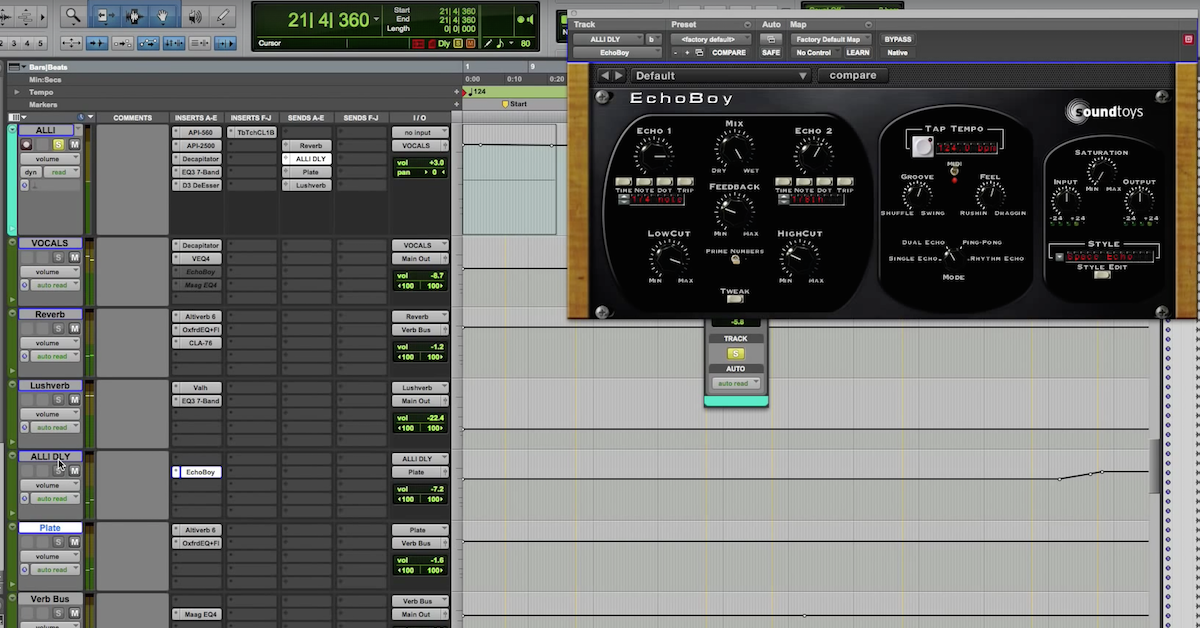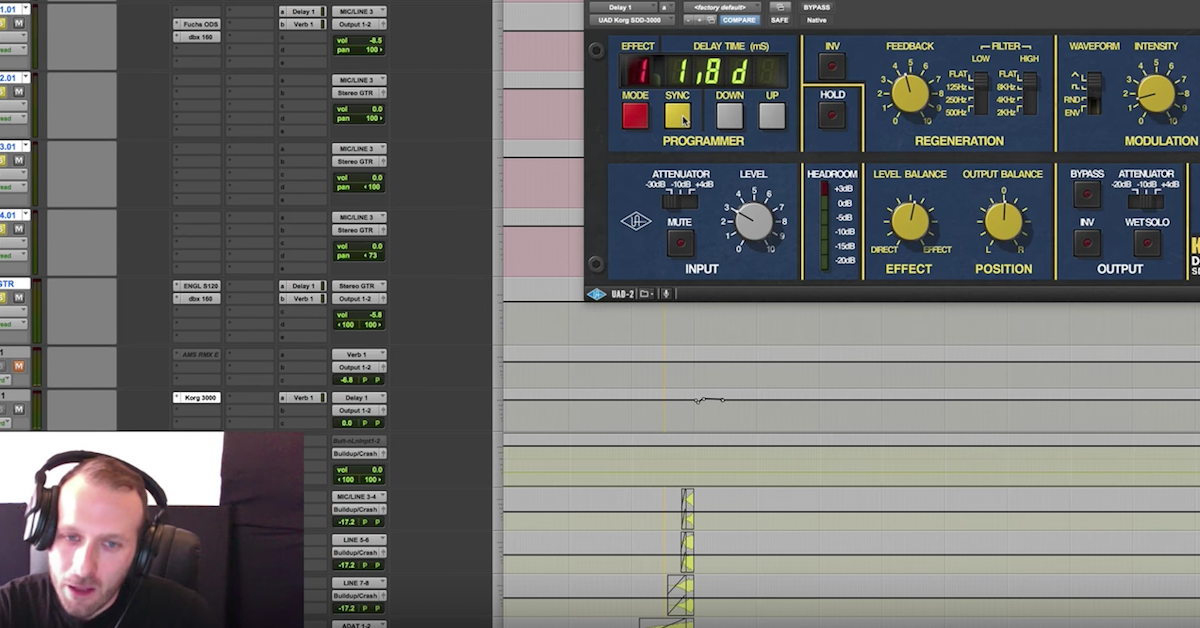Rage Against the Pedalboard Machine
Article Content
There will most definitely be a point in your production career where a bassist or guitarist shows up with a pedalboard. It could be a small, seemingly harmless one or a flatbed-sized mammoth.
There is nothing wrong with wanting a variety of sounds. As a guitarist, I want options too. I’m no purist, but in the studio, I have a tendency to deconstruct pedalboards. Here’s why: no matter what circuitry or wiring they claim to have, the sound changes when you run through pedals or multiple connections. Even a true bypass looper affects the tone.
Purity
To get a focused sound, I try to get to as close to the source as possible. I only patch the effects I’m using during tracking.
I’ve tried most cables, buffers, loopers and they all impact the sound in some way. Mostly in a negative way for my tastes.
There are a few occasions where I find the change agreeable. One is using a tape delay (a real one, not a pedal with a tape preset on it). I like the preamp in tape delays. You can bypass the delay effect and just use the preamp section. I use it to push the front end of an amp a little harder. You can try this with bass or guitar.
The other time I might like the color is from various real spring reverbs. Again, it has to do with the preamps. So far to date, this has been the only occurrence where I break my rule and leave them in the chain.
Ominous Implications
I’m not implying for any second that you should discourage a bassist or guitarist from using their effects. Sometimes it’s crucial for inspiring a performing or part.
But as much as you may think your fancy outboard gear may do a better job, it’s not always the case.
Modern Chemistry
There is a special chemistry that happens when an effect runs before the amp. It sounds quite different compared to adding after the recording. Both have a place. It’s dependent on the situation.
Try this experiment next time a guitarist or bassist is on a session:
- Plug them into their pedalboard and have them play with all effects bypassed.
- Now, unplug from the pedalboard and play straight into the amp.
Do you hear a difference? Most likely you will say yes. There is more punch and strength to the sound.
You will most definitely notice a difference in tone. It’s also worth mentioning that some people like the loss of tone associated with long cables and pedal boards. This is why I suggest you A/B them to hear the difference.
At Arms Length
Cable length. I also try to keep cable runs as short as possible. Long cables change your tone as well as cable brand. I wouldn’t get so obsessed with the cable brand. Length is an issue though (ask any woman…rim shot!!).
My preference is to use 10-foot cables. A 15-footer may appear in my live setup, but not for the studio. A 50-foot cable may be long enough to allow you to walk to the coffee machine between takes but will weigh down your sound.
It’s possible you may like this tone alteration (Gov’t Mule guitarist Warren Haynes does). I’m not telling you what to like, just stating the facts.
Disruptive Coloration
In live situations, you don’t have much flexibility with routing. You’re not going to disconnect anything between songs. You have to live with the signal loss. This is why we go to great lengths to limit the coloration.
There is no reason to settle in the studio. Because of the nuance recordings can capture, we can hear the little things we wouldn’t notice live.
Dismantle The Machine
Let’s say someone has a pedal board with a wah, volume, tuner, overdrive, chorus, delay and reverb on it. On the song you’re tracking the guitarist or bassist is only using a delay. Unhook the delay from the pedalboard and make a direct connection from the guitar -> pedal -> amp.
Notice you don’t see a tuner there? I never put a tuner in the chain while recording. I use a tuner called Stayintune (or the TC Electronics Polytune app) on my iPhone. One of those Snark type clip-on tuners work well too.
Tuners have a way of messing up your chain in the tone department. Only the essentials, please!! This doesn’t mean the guitarist or bassist shouldn’t be checking their tuning after every take. It just means it’s not at their feet.
Tip: It’s a great idea for everyone to use the same tuner. That way everyone’s tuning is using the same calibration.
Protesto
It’s likely you’ll get moans and protests from the guitarist or bassist, but stick to your guns. You’re making a record, it’s better to get the best sound at the source.
I’ve been on sessions as an engineer where a guitarist rolls up, unpacks a huge pedalboard, plugs into a really nice amp and the tone sounds dull. Often they don’t even check the amp tone before plugging in.
Back To The Start
Which leads me to mention, ask the guitarist or bassist to plug directly into the amp before adding ANY effects. Get a really good sound happening before you plug in any effects. Guitar to amp should sound killin’. The effects are the icing, not the cake.
This should be the case for every effects change. Always stay in touch with your inner self (in this case that’s the amp).
Precious Things
The little things add up. Mind you, none of it will compensate for a poorly written or executed part.
In theory, you could have the worlds largest pedalboard in bypass with 100 foot of cabling, but if you have a great player you can get an amazing sound. Gear doesn’t make great music, great artists make great music.
Now you can troubleshoot wimpy tone on your next session. And always remember, the part dictates the sound.






